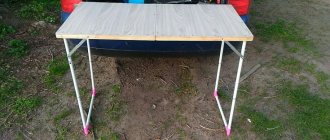Crocheted rugs. Execution techniques
Rugs are easier to crochet than knit, so let's look at some of their types.
The shape of the rugs can be made in the form of any geometric figure of a circle, oval, square, rectangle or even a polyhedron. It depends on your capabilities and desires.
A square or rectangular rug is easier to crochet for a beginner.
There are several techniques for crocheting rugs. The final result of the rug is:
Whole - knitting starts from the middle (center) and goes in a circle. It turns out to be a whole canvas. Any form is acceptable, as they say, “depending on taste and color.”
From the motifs, the rug is ultimately made from separately related motifs joined together. The shape can also be different. An openwork edging is made along the edges. Yarn can vary in color and composition.
On the Internet you can find a large number of photos of a rug knitted from motifs, which is not surprising, because the pattern of such a product attracts increased attention.
A voluminous rug made using the fillet technique. First, a base mesh is created from cells, and then pile is added. Using this type of knitting, the easiest way to make rectangular rugs and rugs.
From linen cord. An excellent and inexpensive rug option. If you knit with a thick rope, it will turn out very quickly and practically - a dense product will serve you for many years and will not wear out for a long time.
Made from synthetic materials. Many needlewomen use garbage and regular plastic bags for knitting.
These rugs are very inexpensive and very durable. They are not susceptible to moisture, and if they get wet, they dry very quickly without losing their entire shape. Feel free to place a synthetic rug in the bathroom.
Rugs made from scrap fabric
From fabric scraps, you can make both a rug and a blanket. This option is great for a rug.
- dense material;
- needle with thread;
- glue;
- self-adhesive tape;
- scissors;
- aerosol for surface protection.
- We cut out the base of the required size from the fabric.
- A little longer than the length of the base, we cut the flaps using Velcro.
- We connect three flaps and weave braids.
- Glue the finished braids onto the base and connect them with thread.
- Remove the self-adhesive tape and straighten the ends with scissors.
- After drying, treat with an aerosol.
Materials and yarn
Before you start creating, you need to decide on the yarn. Floor rugs are most often knitted from thick wool yarn, acrylic, cotton, ribbon yarn, clothesline, twine and even jute.
If you are knitting a rug from wool yarn, you should know that such products retain heat well and resist slipping, but moisture is strictly contraindicated for them. And the cost of such carpets is quite high - wool is not cheap now.
NOTE!
How to crochet a flower to decorate clothes: diagrams with explanations and photo ideas of flowers for clothes (80+ photos)- The best options for DIY knitted hats: step-by-step instructions and tips
How to knit a shirtfront simply and beautifully with knitting needles for children, women and men: useful tips and instructions (80+ photos)
A rug knitted from acrylic will last a long time and retain its original appearance.
Cotton carpets are dense, smooth, hold their shape well, are resistant to abrasion, and, of course, absolutely environmentally friendly.
The ribbons make quite thick carpets. They do not lose their shape and knit very quickly thanks to the large yarn size (7-9 mm).
Carpets made from clothesline, twine and jute are very durable and do not wear out for a long time. Made from 100% natural jute, the mat is very silky on top, with a slight shine.
Twine rug
These carpets are very easy to make. But their appearance can decorate any room. At the same time, they have orthopedic and massage effects.
- glue gun;
- leg-split.
- We begin to wrap the twine into a circle or square, gradually winding it in increasing sizes.
- We glue several parts together to the required size (the parts can be of different sizes and shapes).
Rugs made from old things
We often end up with a lot of old, unnecessary clothes that have nowhere to go. But you don’t have to throw it away at all, because with skillful hands you can knit excellent rugs from worn things that will add a special uniqueness to your home.
Old T-shirts, dresses, sweaters, tights, towels, scraps and even leather belts are suitable for creating original rugs.
NOTE!
- Knit a tunic - simple patterns and recommendations for choosing models for children and adults (130 photos)
- Knitted overalls for newborns - knitting pattern and description of sewing the best modern models (105 photos)
Jacquard knitting patterns: knitting patterns and tips for choosing the best patterns for beginners and professionals (115 photos)
Before you start knitting, you need to make yarn from things - for example, T-shirts or tights can be cut diagonally so that you get one continuous knitted ribbon - our yarn. Roll it into a ball, take a hook of a suitable size and start creating.
T-shirt rugs
The technology for creating the coating for their T-shirts is a little more complex, so it takes perseverance to complete the job.
- T-shirts cut into shreds (25 cm wide and 3 m long). To obtain the desired length, sew the flaps together;
- scissors;
- needle;
- self-adhesive tape;
- a thread.
- We take five stripes and lay them out lengthwise, and put five more next to each other, mirror-type.
- We fix the edges of all strips on one tape using a thread and a needle.
- We take the first strip and tie it to each subsequent one until it reaches the middle.
- We repeat too, starting from the opposite side.
- We connect those that meet in the center of the ribbon.
- Then we do the same with the opposite strip and so on until the end of the product.
- After completing one rug, start knitting the second one.
- We connect the finished parts.
- The size of the finished carpet depends on the number of parts. It can be either small or large, depending on its purpose.
Knitting a round rug
Anyone, even a very “green” craftswoman in this matter, can handle knitting a rug for the home.
Everything, of course, comes with experience, but the most important thing that a beginning needlewoman should know and be able to do is the basic elements of knitting, such as an air loop, a connecting stitch, a double crochet and a single crochet.
DIY rugs: 30 master classes
Let's talk to you about soft, fluffy and cozy rugs, without which it is hard to imagine the interior design of most homes. Buying a finished product is not difficult, but you can make such a thing yourself! It will be a pleasure to walk on such handmade rugs.
From old things
There are different schemes, using which you can make a stylish product for your home out of unnecessary things. You can choose any material, focusing on the characteristics of the fabric. It is convenient to create knitted items from T-shirts and jeans.
For a child, such an activity will be interesting, so it is better to watch the educational master class with him. These two types of clothing are considered the most popular and, for sure, there are a couple of models lying around in your closet that you would hate to throw away. I offer you a practical option for using them.
From old jeans
Old clothes, in particular jeans, make very soft and original models. They can be bedside, but are not very suitable for the bathroom. The manufacturing process of such a product is extremely simple.
- Remove all tight seams and cut the jeans into flaps.
- Weave them into long braids and start braiding them, forming a circle.
You can also use other methods:
- Crochet any shape from scraps, using them instead of regular yarn.
- Intertwine the strips so that you have a braided braid; be sure to sew its edges by machine or by hand, overlock.
Crocheted denim throws can be made for the dacha, put on chairs, but this is not the best option for the wall.
Jeans labels are also suitable for creating interesting decorations for your car or home. Just 50 labels and a suitable piece of fabric are enough. The work will take quite a lot of time, however, this is a truly original option. The labels just need to be connected to each other and sewn to the base.
Even old belts are suitable for rugs. They just need to be sewn together and secured to a canvas base in any convenient way. The product will be appropriate in all rooms and will become an original decoration of the car. The excess edges of the belts can be trimmed or left, preserving the aesthetic, careless appearance of the product.
From old T-shirts
Wall and floor mats can be easily made from waste T-shirts. To work, you can use the patchwork technique, sewing together scraps of various fabrics. Keep in mind that this is a rather labor-intensive process, so I suggest making a carpet called “French Bracelet”. For it you need to prepare:
- scissors;
- needle with thread;
- adhesive tape.
- Arrange 5 strips of different colors in any order.
- Place 5 more stripes next to them (mirrored).
- Secure the edges with tape, take one strip and tie it on each subsequent one. Stop when you reach the middle.
- Perform similar actions with the opposite strip, and then with the rest (only in a mirror manner).
- Tie the strips that meet in the middle together.
- Then knit another similar rug and connect both products to each other. The number of elements depends on the desired end result. If you need a larger product, there may be more parts.
- Trim off the excess parts and secure the edges with thread.
I have selected for you several unusual video master classes on woven rugs from T-shirts. Hope you like them.
Expert opinion
Kovalev Viktor Georgievich
Interior designer with 7 years of experience.
Just as a theater begins with a coat rack, so we can say that a home begins with a rug. Carpets have a very long history. Over such a long time, they have lost a little in popularity, but have not sunk into oblivion.
Today we will look at a couple of options on how and from what you can make a large carpet or a small rug with your own hands.
- Carpet stitching
- Textile
- Old jeans as the base for your rug
- Rug made of jeans using weaving method
- Rug made of belts
- Pillows as the base of the rug
- Cork mat
- Pebble rugs
- Moss
- Night mat
- Photos of do-it-yourself rugs
How can you knit a round rug?
Let's look at the basic knitting steps.
First, let's plan how our rug will end up - thin or thick - and take the necessary yarn and a hook of the appropriate size.
NOTE!
- Curtains for the balcony: options for ideal design and combination in the interior
- Knit a men's sweater: step-by-step instructions on how to quickly and easily knit a sweater with your own hands (80 photos)
How to knit socks - step-by-step description and recommendations on how to knit warm socks correctly and quickly (85 photos)
The first step is to knit a “magic” ring - a chain of air loops - if the yarn is thin, then 2-3 loops are enough, and if thick, then 4 or 6. We tie the first and last loop with a connecting loop.
Next, we decide how we will knit - with or without a crochet (most often round rugs are knitted with double crochets).
To make an even circle and the mat to grow evenly, add a loop in each row. For example, you may end up with 6 columns in the first row, 12 in the second row, 2 times more in the third, and so on until we get a circle of the size we need.
Don't forget to fasten the thread and iron our creation well.
Don’t be afraid to knit rugs in other shapes, including intricate ones. Nowadays there are a huge number of videos on the Internet of knitting a wide variety of rugs, so making them will not be difficult.
Beautiful oval rug with a spiral pattern
Scheme
Description
A very beautiful oval rug is obtained with a pattern in which the elements in each row are shifted to the right, as if in a spiral. It turns out so original.
If you knit strictly according to this pattern, then the rug comes out very small: 48 x 37 cm. But this can be corrected by casting a chain, the length of which can be calculated using the formula I proposed, taking into account that the number of loops should be a multiple of 5 plus 3.
In addition, starting from the middle, my knitting began to tighten too much, so I advise you to increase the number of air loops in the arches in the last rows: instead of 2, knit three at a time.
Video
Rugs and interior
Crochet rugs can add a unique look and style to every room.
For a nursery, you can knit a rug in bright colors or decorate it with appliqués. A sun mat in the shape of a favorite animal or cartoon character will be perfect for your fidget's room.
To keep your child warm not only when running around the room, but also sitting on the floor, it is better to knit a carpet from dense, thick yarn - knitted, tape or wool. Such a rug will once again remind the baby of the warmth and care of his parents.
And remember that the more natural the material is for a child, the better. It is better to use 100% fiber yarn, such as cotton.
A synthetic rug, for example, made of acrylic or even polyethylene, is perfect for the bathroom, because this material is very resistant to moisture, dries quickly enough without losing its shape and washes well.
For the living room and bedroom, you can make a rug from different motifs joined together (circles, squares or even hexagons).
The classic option is a round or oval carpet, a rectangular rug in predominantly neutral colors - beige, chocolate, cream or milk.
Calm colors in the bedroom or living room will help you relax and relieve stress, especially after a hard week at work.
You can lay a rug in the kitchen, knitted from old things - T-shirts, tights, scraps or ribbons. Synthetic carpets work well.
The kitchen rug should be easy to clean, and it would be nice if the “consequences” of lunch—crumbs, pieces of food, etc.—were not so noticeable on it. Therefore, choose bright colors better.
A rug made of thick yarn - jute, twine, clothesline or old clothes - is suitable for the hallway. It is important that the rug at the front door does not wear out for a long time, because people constantly wipe their feet on it.
A polyethylene carpet will also work, but it is better to make it in dark or solid colors so that street dirt is not noticeable.
Among the variety of shapes and types of knitted carpets for the home, do not forget to select products specifically for each room - wisely combine interior details with rugs, match the colors of your creation to the color scheme of curtains, furniture, and kitchen utensils. Everything should be harmonious.
You can also focus on contrast, which will help break up the monotony of the room (for example, in a kitchen in beige tones it is better to lay a rug made of bright colored stripes - orange, red or brown).
A knitted rug is perfect for both decorating your home and creating an indescribable, cozy atmosphere in it.
Thanks to our tips and recommendations, choosing yarn and crocheting a rug is not at all difficult, even if you are a beginner. Go for it!
Oval carpet made from braids woven from T-shirts
A nice, homemade rug from old things for feet in the bathroom or bedroom can be made from old T-shirts (an old T-shirt will do). Cotton is an environmentally friendly and soft material. Just three steps and the masterpiece is ready! You will need to select about 13 T-shirts. Choose plain or colored T-shirts - it depends on your taste and interior.
First step. Manufacturing of knitted threads
We have placed the production of knitted stripes with illustrations and detailed descriptions in the photo.
Here's how to cut a T-shirt to make one whole strip:
Second step. Braiding
From the resulting balls, take three and begin to weave a braid. When the strip ends, weave in the next strip and so on until the fabric runs out. If the colors are different, then try to alternate them when weaving.
When working, it is convenient to weave a braid, holding it between your knees, and to keep the braid tight and not unravel, use a clothespin when moving to the next piece of braiding.
As a result, you will get a long multi-colored braid. Fold the ends and sew with strong thread.
Third step. Machine stitching
Take a sewing machine and a knitting needle, put a zigzag stitch on it. Next, select the shape of the product: oval or rectangle (you will get a track).
In an oval rug, you need to decide on the length of the center; the longer the center, the longer the rug. The smaller it is, the wider the oval will be.
We take the end, measure the length, make the twist correctly - clockwise. Next we apply the second row of braids.
Start stitching where the first turn is.
We pass between two braids in a zigzag. We reach the beginning of the braid and carefully bend it under the next layer and make a turn again.
And so on in a circle (if oval shape) or along a snake (if rectangular shape) until the knitted braid ends.
HEALTHY! The product may slip, so you can sew or glue it to a non-slip backing for safety, which can be found at IKEA called STOPP FILT.
Photo instructions on how to knit a rug
What to knit a carpet from? Yarn comparison
Do you want to knit a carpet yourself, but don’t know which yarn to choose? Then this article will help you decide.
To carry out the analysis, I used 8 types of yarn.
The one that is most often recommended by manufacturers, that is, knitted yarn and cords. And those types that I have been using for knitting carpets for many years, but which were not originally intended for this.
I’ll also tell you about my notes on each type of yarn tested.
We determine the experimental constant:
For all samples, 7 rows were knitted in a circle with regular single crochets and 6 increases in each row.
The hook number was selected for each type of yarn, based on the required maximum density of the carpet. That is, the fewer holes, the better!
.
1. Maccheroni.
Manufacturer YarnArt Türkiye. Yarn composition: 90% reconstituted cotton, 10% polyester Skein weight: 500-700 g Thread length: 100-150 m.
We knit in one thread. To calculate, we take the weight of a skein of 600g, length 100m, since the skeins come in different weights.
Notes: Knitting is stiff and dense. Visible holes remain, especially when knitting increases. The carpet turns out to be quite thick.
The resulting sample: diameter 22.5 cm, thickness 16 mm.
.
.
2. Cordy
Manufacturer Cordy. Yarn composition: Cotton - 70%, polyester - 30% Cotton cord diameter 5 mm. Skein weight: about 1000 g Thread length: 200 m
We knit in one thread. Hook No. 10.
Notes: Knitting is stiff and dense. Visible holes remain, especially when knitting increases. The carpet turns out to be quite thick. Massage effect.
The resulting sample: diameter 20 cm, thickness 15 mm.
.
.
3. New from YarnArt Cord Yarn
Manufacturer YarnArt Türkiye. Yarn composition: 40% cotton, 60% polyester Skein weight: 250 g Thread length: 73 m
We knit in one thread. Hook No. 8.
Notes: due to the higher percentage of polyester, the thread is softer and more pleasant than previous tests. There are holes in the knitting, but they are less noticeable, and the filling capacity is greater.
The resulting sample: diameter 17.5 cm, thickness 12 mm.
.
.
4. Biskvit yarn.
Manufacturer Russia. Yarn composition: 100% cotton Skein weight: 330 +- 30 g Thread length: 100 +- 10 m
We knit in one thread. To calculate, we take the weight of a skein of 300g, length 100m. Hook No. 8.
Notes: yarn similar to Maccheroni, but 2 times thinner and lighter. Knits just as hard, there are holes.
The resulting sample: diameter 16.5 cm, thickness 11 mm.
.
.
5. Polyester knitting cord with 6 mm round filler 1s-50/35.
Sold in skeins containing 200 m of cord. The approximate weight of one skein is 622.5 g. The supplier does not state the weight, but after weighing 4 skeins, she determined this average figure.
We knit in one thread. To calculate, we take the weight of the skein to be 622.5g and the length to be 200m. Hook No. 8.
Notes: Rigid knitting. The carpet has a massage effect. Holes are also present.
The resulting sample: diameter 16.5 cm, thickness 10 mm.
.
.
6. Ribbon yarn.
Manufacturer YarnArt Türkiye. Yarn composition: Cotton - 60%, polyester - 40% Skein weight: 250 g Thread length: 125 m
We knit in one thread. Hook No. 7.
Notes: flat cord. Knitting is much softer, but for a carpet, in my opinion, one thread is not enough. There are holes.
The resulting sample: diameter 12 cm, thickness 8 mm.
.
.
Almost all of the samples listed above contain cotton. And cotton, as we know, is not a soft material at all. Therefore, we will consider other yarn options. In particular, yarns containing wool and acrylic.
In fact, more than 6 years ago I started knitting carpets using acrylic. Then from wool mixture, and only now am I testing various knitted options and cords. That is, I’m going from the opposite 
So let's continue.
.
7. Yarn Souffle Sufle
Manufacturer: Semenovskaya Russia. Yarn composition: 100% acrylic Skein weight: 100 g Thread length: 292 m
We knit in five threads. Hook No. 8. Through experimentation, I determined for myself the optimal number of threads of this yarn for the thickness of the rug I needed.
Notes: The knitting is soft and comfortable. The fabric turns out homogeneous, without holes. Warm, comfortable.
The resulting sample: diameter 13 cm, thickness 9 mm.
.
.
8. Yarn Blended 2
Manufacturer Pekhorka Russia. Regenerated yarn. Yarn composition: wool 30%, high-volume acrylic 70% Skein weight: 200 g Thread length: 200 m
We knit in two threads. Hook No. 8. I knitted this sample in 2 threads specifically for this analysis. I usually use 3 strands in my orders.
Notes: The knitting is soft and comfortable. The fabric turns out homogeneous, without holes. And very warm!
The resulting sample: diameter 14.5 cm, thickness 8 mm.
.
.
9. Yarn Blended 3
Manufacturer Pekhorka Russia. Regenerated yarn. Yarn composition: wool 30%, high-volume acrylic 70% Skein weight: 200 g Thread length: 200 m
We knit in three threads. Hook No. 9.
Notes: The knitting is soft and comfortable. The fabric turns out homogeneous, without holes. And very warm!
The resulting sample: diameter 16.5 cm, thickness 11 mm.
.
.
Next, I placed all the samples in descending order by diameter and thickness in the graphs.
.
.
.
And now math!
We determine the consumption of yarn used in the samples for knitting 1 m2 of product.
To do this, we need to know the weight of each sample. Further calculations will be based on this parameter.
The table below summarizes all the data. I will not draw conclusions from the table; everything there is quite clear and understandable.
.
.
Of course, after use, or WTO of the product, the thickness of the carpet will decrease. You can safely subtract 10-20% from it, especially in soft carpets.
It is also necessary to take into account errors in calculations. What could they be?
- individual knitting density; - knitting method; - selected hook; - ends of threads and ways to hide them; - different lengths of thread in skeins or defects in a skein.
Also, do not forget, if you are knitting a round rug, that the area of the circle is calculated using the formula S=Pi*R squared. A carpet with a diameter of 1 m has an area of 0.785 m2.
.
A small conclusion from this analysis.
The types of yarn offered by manufacturers for knitting carpets or baskets are often reduced to cords or knitted yarn. But it is impossible to make a large smooth color transition from these types, or to knit, for example, a woolen carpet. It is mainly pure cotton or cotton with the addition of synthetic fibers.
Therefore, the advantage of knitting carpets from a large number of medium-length threads is:
— the ability to select any thread of any composition from any manufacturer;
- make smooth color transitions and even try to knit a pattern;
- knit any thickness of carpet, increasing or decreasing the number of threads.
Some examples of carpets:
Example 9, from a three-strand blend.
Example 5, polyethylene cord.
Example 7, soufflé with transitions.
.
I hope my experiments helped you decide. But, if you have knitted with other types of yarn and want to conduct your own experiments, I suggest sharing your results in the comments to this topic. Just don't forget to associate the pattern with the original constant!
I will be glad to see your hearts and likes, and I will be happy to answer your questions.
Dear needlewomen! If any of you would like to have a file with ready-made calculation formulas, which are presented in the table, I will be happy to send it to you.
Thank you for your attention!











